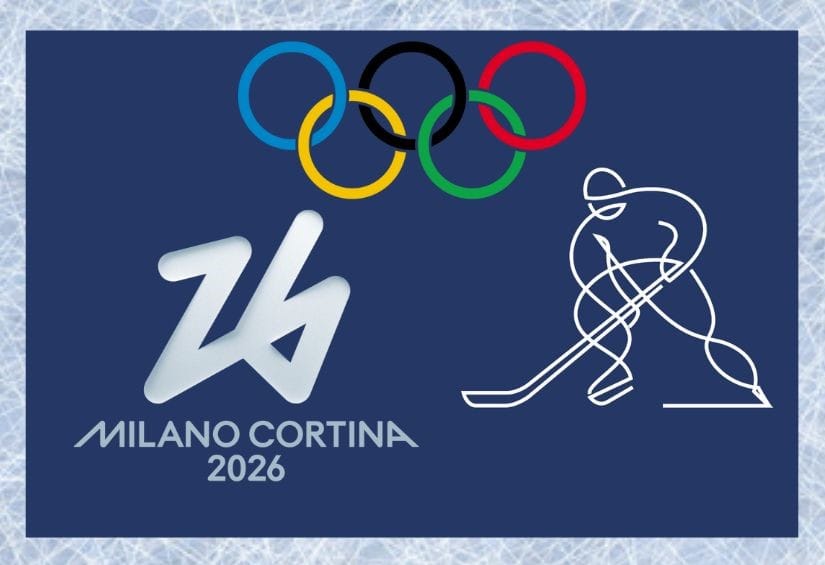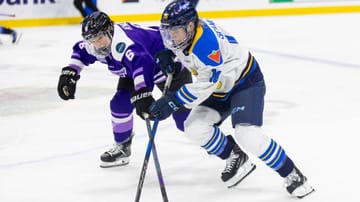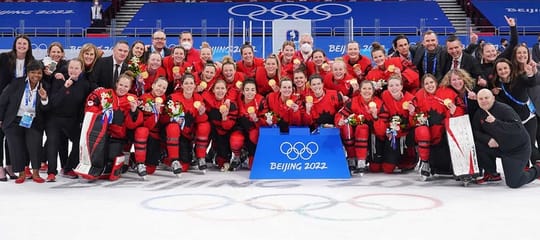The University of Minnesota announced on their socials today that Abbey Murphy will be returning for her final season with the Gophers.
𝙎𝙝𝙚'𝙨 𝙗𝙖𝙘𝙠! ✨
— Minnesota Women's Hockey (@GopherWHockey) May 7, 2025
All-American @Abbey18Murphy will return to the #Gophers for the 2025-26 season! 〽️🏒 pic.twitter.com/KdlbooMcay
Based on conversations with players and collegiate as well as international staff, she is not the only player I expect to stay with her collegiate team for this year leading up to the Olympics.
Using the 2025 Women’s World Championship roster for reference, the two players this most applies to are Murphy and Wisconsin’s Lacey Eden. Both were redshirt seniors this past season, having taken the 2021-2022 season away from their collegiate squads while centralized with Team USA prior to the 2022 Tokyo Olympics. They’ve each completed four seasons of play, but have a year of eligibility remaining due to the Covid “bonus year.”
With the advent of the PWHL, both Team USA and Team Canada have decided not to centralize leading into the 2026 Milano Cortina Olympics. The belief is that players are maintaining a high level of training and competition while in the PWHL, thus negating the need for centralization. My understanding is those federations will each hold monthly mini camps for their player pool leading up to February’s games.
That change in procedure led many to wonder if Murphy and Eden would forgo their final year of eligibility and declare for the PWHL Draft.
Team USA had nine collegians on the 2025 Worlds roster and some wondered if Wisconsin juniors Caroline Harvey (who delayed her entrance to college by a year in order to play in the 2022 Olympics), Laila Edwards and Kirsten Simms or Penn State junior Tessa Janecke or Clarkson junior Haley Winn would also consider an early jump from college to the PWHL. The speculation did not much extend to the other two collegians, Ohio State’s Joy Dunne and Wisconsin’s Ava McNaughton, who were both sophomores this season.
I’ve been unsure how to write about this because a lot of what I have heard cannot be verified until the players themselves announce their intentions and is unlikely to be confirmed on the record, but my understanding is that in terms of preparation for the Olympics, the focus is on consistency and comfort.
Declaring for the Draft brings up a multitude of unknowns:
- Will the player be drafted?
- Will they get playing time?
- If so, will it be comparable playing time to what they have with their college team?
- Will they be utilized in a way that will continue to develop their skill set and hockey IQ?
The info about next year’s expansion teams is very thin and collegians have to declare by tomorrow (May 8). Getting drafted to Seattle or Vancouver would bring up even more uncertainty.
- Who is the coach?
- What is their style?
- Will the facilities, nutrition, training etc… be ready - and on par with what the player is currently receiving at their college?
- What effect will consistent travel from the west coast have on fitness, sleep, routine, level of play? This is a concern not just for their PWHL game schedule, but also adding in the likely monthly USA camps they’ll take part in for Olympic prep.
Conversely, most of this group of players are at large, state colleges with access to professional-level resources. They’re all at institutions that give women’s hockey its due. In that light, it would seem that returning to a collegiate experience where there are many fewer unknowns in terms of a player’s ability to focus on hockey and be at their best leading into February’s Olympic tournament is the best option. They know what to expect and have a comfort and ease there that would be difficult to achieve as a rookie anywhere in the PWHL.
That’s all the working theory, at least.
This is uncharted territory and it came up pretty fast, all things considered. The PWHL was imminent, but not actually announced until August 2023. Its success was not a given, nor was there a guarantee of longevity, meaning thoughts of effects on centralization were nebulous at best. A new model for the pre-Olympic year and season has been conceived a bit on the fly and no one will know whether the choices made were good ones until sometime in 2026. There’s a learning curve and a lot of uncertainty of what this landscape looks like now, which is why I think there is a prevailing instinct to control the controllables. For the collegians, that appears to be a suggestion they stay in the situations they are most comfortable and can receive the most support in every aspect of their preparation, from strength and conditioning to nutrition, coaching and regular playing time.
And while it’s not related to the above conversation, it’s worth saying that Murphy’s return is not super surprising from a Gopher-only lens.
Minnesota hasn’t won a national championship since 2016 and hasn’t played in a title game since 2019. Though there were some ups and downs, they were ranked fourth for much of the past season. They lost to Wisconsin in overtime in the WCHA Tournament, which left them feeling like they were on par with the top team in the country (and eventual national champions).
They picked up a number of players from the transfer portal including Princeton’s Sarah Paul, Minnesota State’s Jamie Nelson and Boston College’s Molly Jordan and their outstanding incoming freshman includes USA U18 captain Bella Fanale, USA U18 goalie and Minnesota goalie of the year Layla Hemp and Czechia national team forward Tereza Plosová.
Murphy herself was second in the country with 33 goals and fourth in the nation with 65 points. She averaged 1.55 points per game. She is crazy talented and is about to get a supporting cast that gives the Gophers depth they haven’t had for quite a few years.
Any centralization or Olympic discussion aside, if nothing else Murphy is crazy competitive and the ability to put her team back on top had to be difficult to pass up.
Update 5/9/25
Hey Siri, play “Stay, Stay, Stay” by Taylor Swift.
— Wisconsin Hockey (@BadgerWHockey) May 9, 2025
Happy to have @lacey_eden back for another year! #Badgers || #OnWisconsin pic.twitter.com/c9uFEyWHKU




